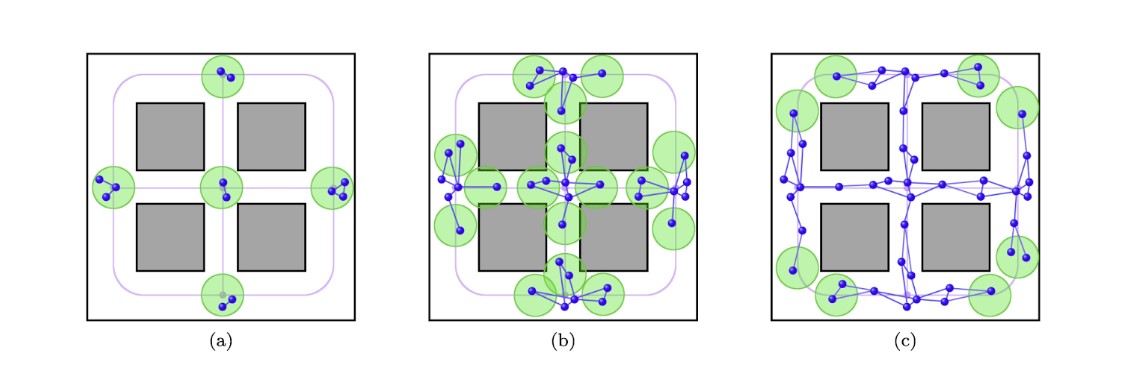Motion Planning Algorithms
Motion Planning involves finding a valid path for a moving object in a given environment. Motion planning algorithms are applied to several disciplines, including robotics, automated design, computational geometry, and biology. Due to their complexity, motion planning problems are generally solved using sampling-based algorithms that rely on an abstraction of the problem called a configuration space (Cspace) and good computational geometry tools.
Motion Planning Algorithms
In my research, I have proposed algorithms that take advantage of workspace guidance to discover important planning regions in the environment efficiently. This has entailed creating a general representation of skeleton annotations to guide traditional planners. I am interested in applying motion planning algorithms to robotics and computational biology applications and studying accessibility.

In my research, I have proposed algorithms that take advantage of workspace guidance to discover important planning regions in the environment efficiently. This has entailed creating a general representation of skeleton annotations to guide traditional planners. I am interested in applying motion planning algorithms to robotics and computational biology applications and studying accessibility.